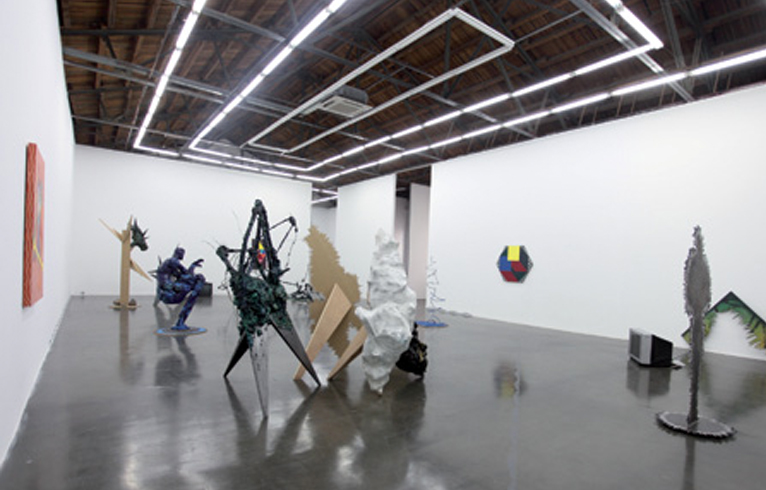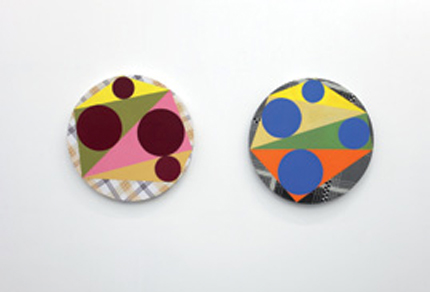ZHAO YAO: I AM YOUR NIGHT
| October 12, 2011 | Post In LEAP 10

The phrase “I am your night” could essentially be interpreted as a blunt statement aimed at the audience, and especially at the artists, or socalled experts, who showed up to Zhao Yao’s latest solo show. And if this audience adopt this rather poetic phrase for their own rhetorical needs— by turning it into one of those stock phrases used when responding to an exhibition— then they’ve unfortunately missed the joke. For in comparison to the work featured in the exhibition, the title seems to be reserved for those in the know.
I first encountered Zhao Yao’s work at his solo exhibition in the 51m2 series at Taikang Space in 2010. This time, at Beijing Commune, Zhao’s intention seems to be to push his practice even further towards its fundamental purpose. At last year’s solo show, he used a pencil to meticulously color in the banknotes of various nations, leaving only the smiling face of their leaders. Although not a particularly refreshing idea, this piece did succeed in raising a smile in those who shared with the artist an appreciation for simple logic and subtle transmutation. However, it could very well be this empathic event that engendered greater suspicion among the audience present this time around.
It’s clear that in this show Zhao Yao is attempting to break free from the interpretive and conceptual tropes that allow the viewer to familiarize himself with a given work, though the motive driving this escape is less an apprehension of entrenched rhetoric than a conscious decision informed by experience in another field. Himself a writer and editor of an art website, Zhao necessarily spends hours trawling through other artists’ websites, endlessly scanning the blogs and Wikipedia pages. In light of this, Zhao’s solo show at Beijing Commune could be seen as an attempt at a kind of conceptual overhaul, and on a formal level, as an attempt to expose the limits of technology. In his series “A Painting of Thought,” for example, simple geometric shapes (mathematical equations taken from brain-teaser books) are painted onto found fabric, itself geometrically patterned— here the artist expresses a desire to merely act on a material. However, technological simplicity does not prevent this painting from participating in the wider discourse of the exhibition: free-standing installations and paintings dominate both exhibition spaces; prints of the character “ah,” a non-verbal interjection, similar in function to “oh” or “aaah,” stutter across the walls and floor in an ascending/descending pattern, while the sound of a tongue clicking in sync with intermittent flashes of color from television screens can be heard throughout the gallery.

Mixed-media installations (employing steel, plastic bottles, cling film, planks of wood, bits of metal, amongst other things), rather than betraying an obsession with material itself, instead reveal the artist’s deftness in the manipulation of such disparate objects: Zhao Yao cuts, splits, wraps, and colors until this collation of contrasting materials develop their own kind of system in accordance with each work’s aesthetic needs, or even better, towards the continual development of its independent formal logic.
Though even if the information presented in this exhibition seems relatively straightforward— by the trail of “ah”s, the tongue clicks that ricochet around, the patterned material and its overlaid geometric shapes— Zhao Yao at every point strives to turn a material choice into a conceptual proposition or symbolic invocation. This new direction in his practice insists on confronting speculative problems, whilst the strength of information (read: knowledge) could certainly develop into a unique formal vocabulary. However, the way in which these signs and symbols are used to shape the artist’s practice needs further development, and bona fide clarity. Otherwise, no one will be able to make out to whom this dark night actually belongs.


